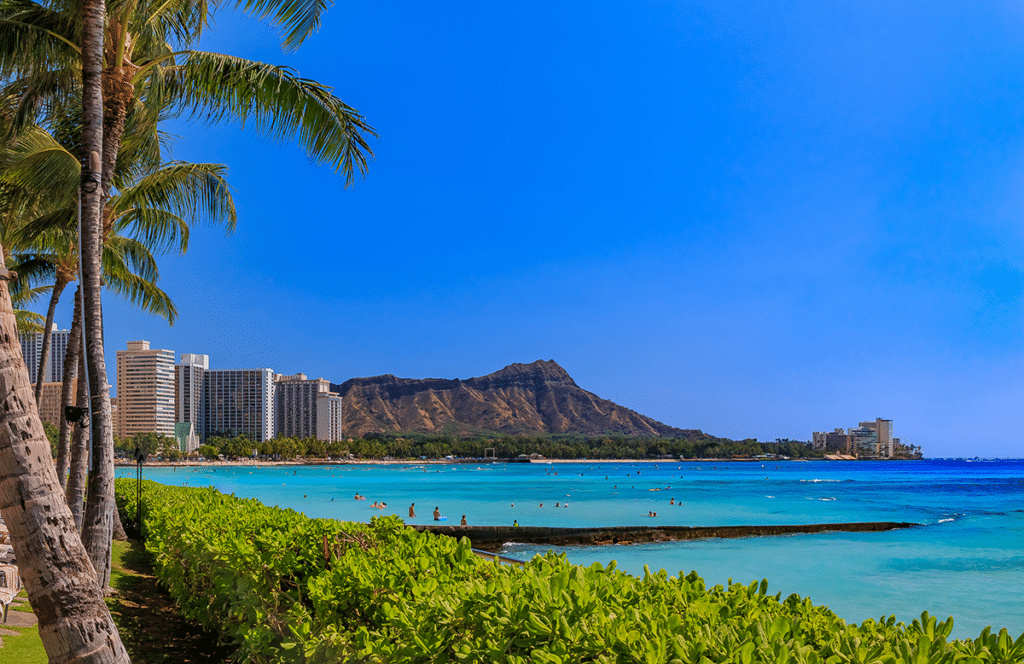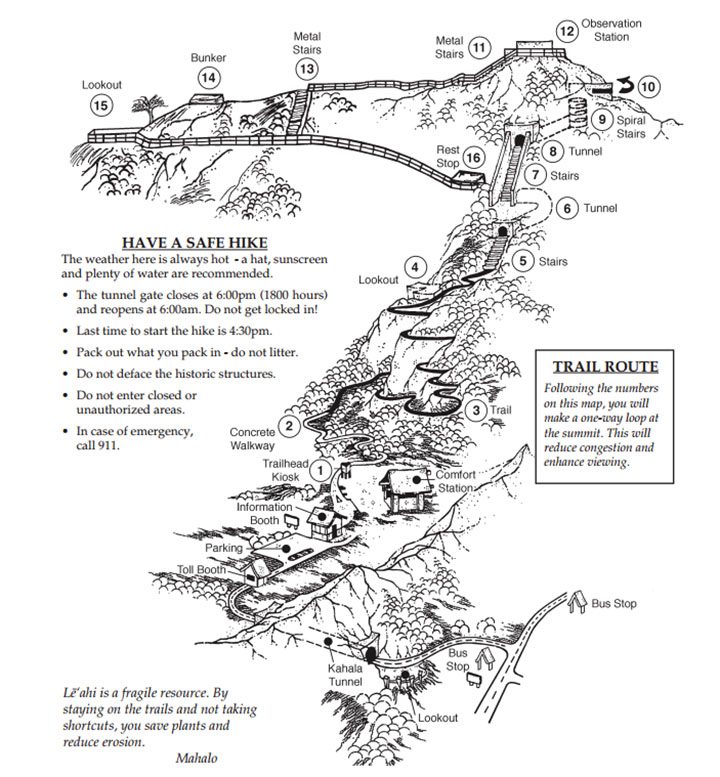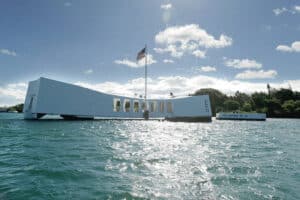
Diamond Head Crater on Oahu.
About 300,000 years ago, molten lava flowed into the cool waters of the Pacific, creating a violent steam explosion. Cinder, ash and chunks of limestone reef flew into the air, then settled and hardened into a tuff cone that measures 760 feet at its highest point and has a 350-acre crater within it.
Legend Has It…
Legend says this volcanic cone was one of the places where Pele, the volcano goddess, and her younger sister, Hiiaka, lived as they searched the Hawaiian archipelago for a permanent home. It is said Hiiaka dubbed it Lae-ahi, thinking its forehead resembled the lae (brow) of the ahi (tuna). The spelling was later changed to Leahi.
Scholars of Hawaiian history and culture note another translation of Leahi could be lei (wreath) and ahi (fire), referring to the fires Hawaiians lit along the crater’s rim to guide canoes. A heiau (temple) dedicated to Laamaomao, god of the wind, was built there to deter trades that could extinguish those navigational fires.
How Diamond Head Got Its Name
Western explorers and traders hiking Leahi’s slopes in the late 1700s mistakenly thought calcite crystals sparkling in the rocks were diamonds. Thus came about the common name for what is now Oahu’s most famous landmark: Diamond Head.
Diamond Head’s Military History
In 1904, the federal government bought Diamond Head for military use. Fort Ruger, Oahu’s easternmost defense for sea- and ground-based attacks, was established there in 1906, and in the ensuing years bunkers, pillboxes, batteries, anti-aircraft gun positions, searchlight stations and a fire control station were installed in and around the crater. None of the artillery was fired during a war, however, and all guns were removed between 1940 and 1950.
State Monument and National Landmark
Diamond Head was designated a State Monument in 1962 and a National Natural Landmark in 1968. Built in 1908 as part of the Army’s coastal defense system, an 8/10-mile trail climbs 560 feet from the crater’s floor to its summit. Hiking the trail is a popular activity because of the reward at the top: a magnificent view of the ocean and coast stretching from Koko Head in the east to Waianae in the west. Nominal entrance fees are charged to visitors.

Infographic credit: Department of Land and Natural Resources, Hawaii.
For more information, check out the Department of Land & Natural Resources’ Division of State Parks website.







